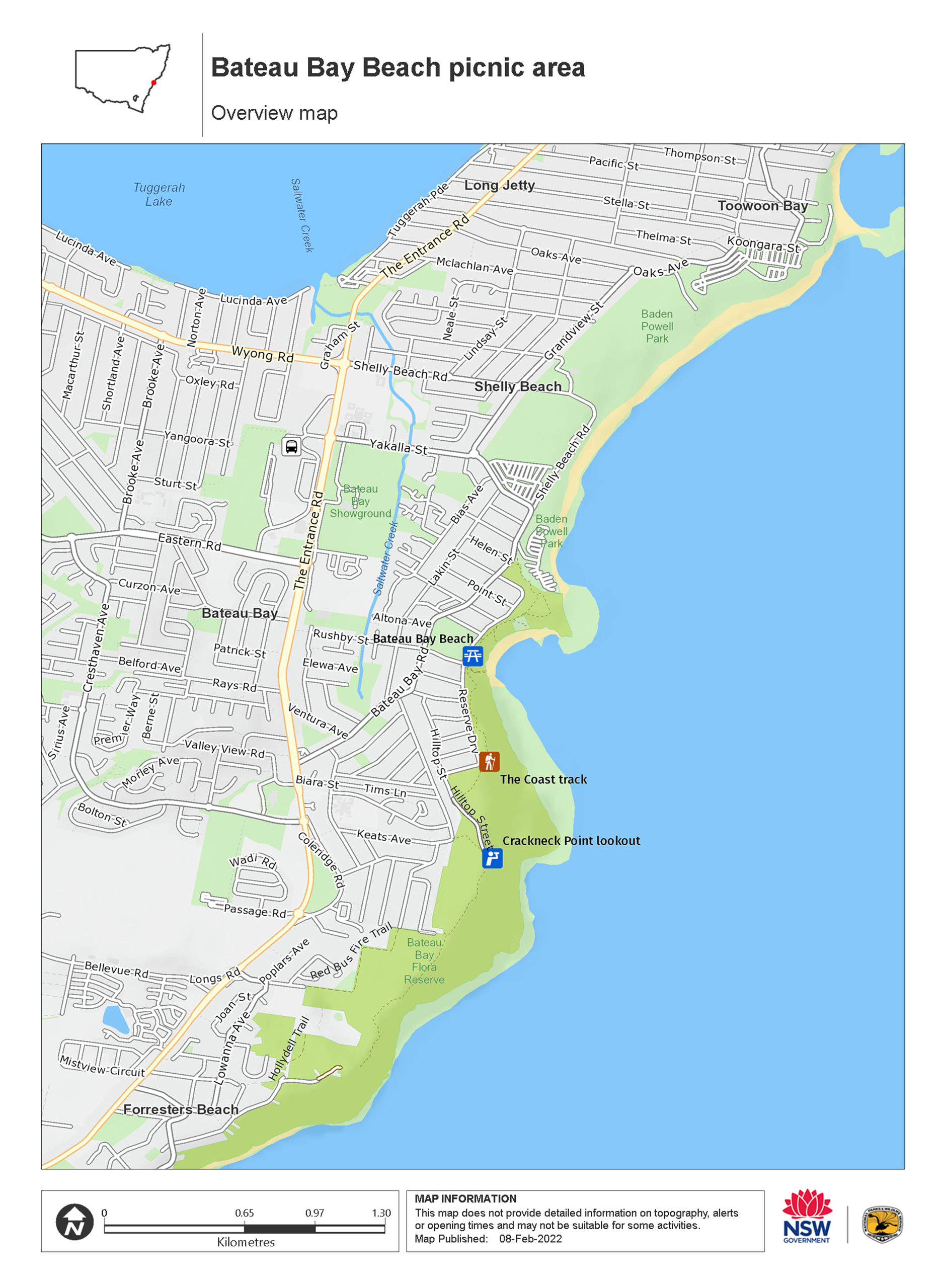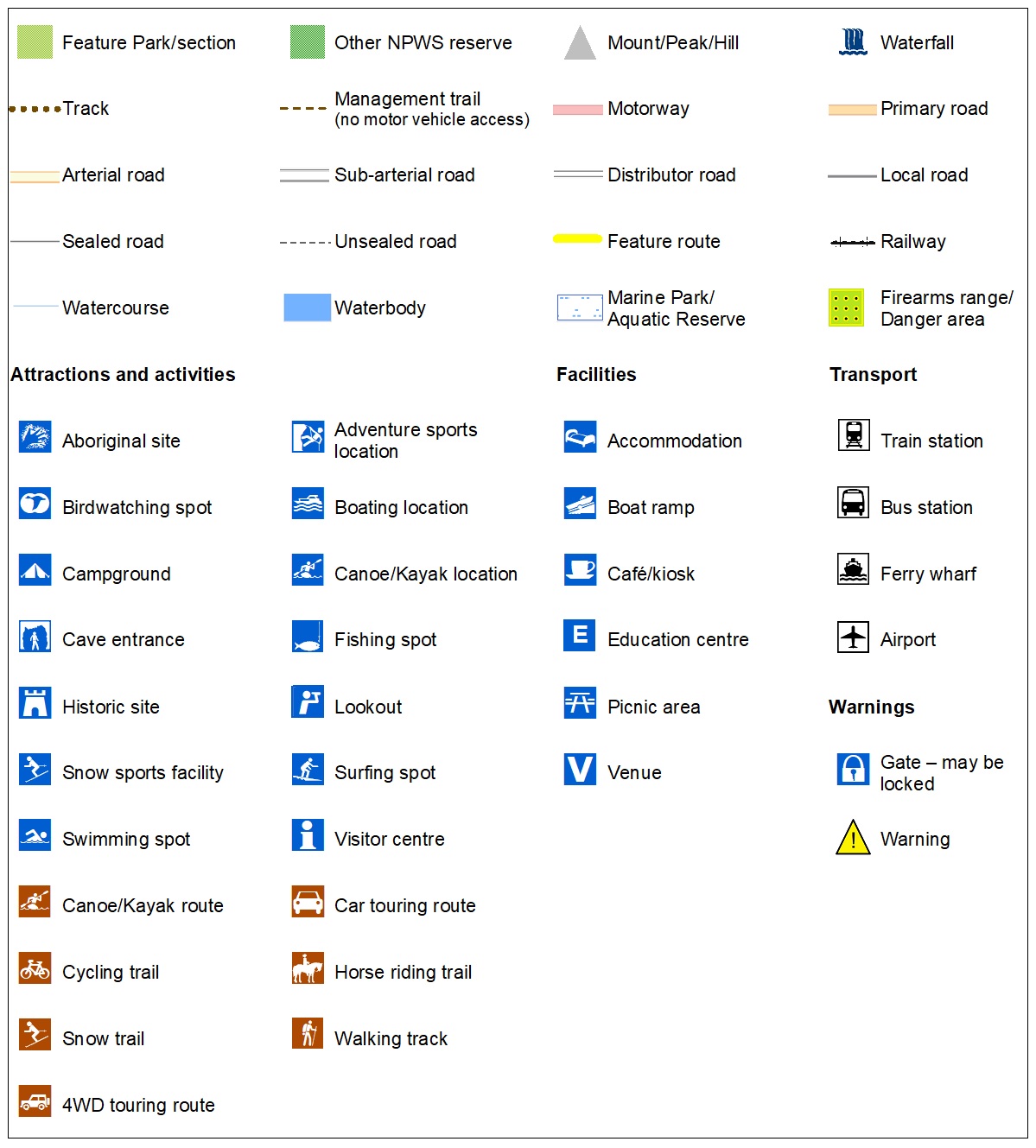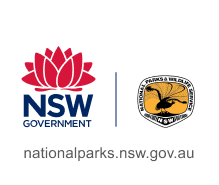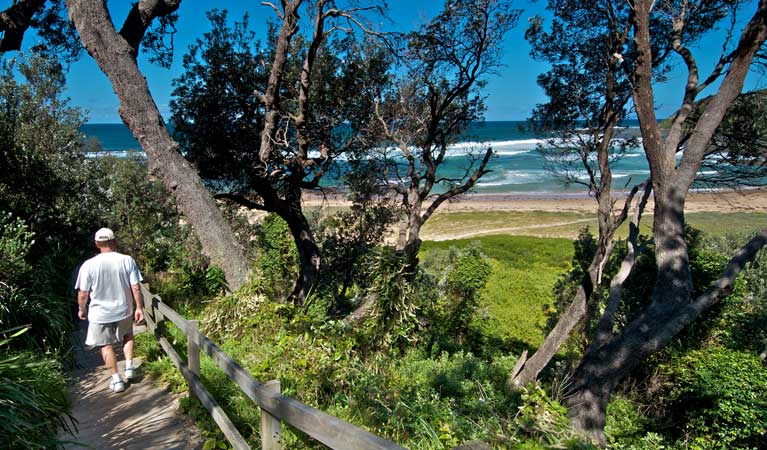Overview
Come to relax at Bateau Bay Beach picnic area, close to The Entrance and The Coast walking track. It’s well located for swimming and fishing, with barbecues nearby.
- Type
- Picnic areas
- Accessibility
- Medium
- What to
bring - Drinking water
Whether you’re enjoying a family picnic or pausing on driving trip for a quiet cuppa – Bateau Bay Beach picnic area is the ideal spot.
Positioned behind the north end of the beach, this picnic spot is very sheltered from the elements and large trees keep it nicely shaded, but there are also parts that catch the sun in winter.
Remember to bring your towel – one look at the beach and you’re sure to want a swim or to dip your toes in at least. It’s also a good spot for fishing or snorkelling and children will love to explore the rock pools. When you’ve been for a swim and polished off your lunch, why not take a short scenic walk along The Coast walking track and take in the view from Crackneck lookout?
Map

Map legend

Local alerts
For the latest updates on fires, closures and other alerts in this area, see https://www.nationalparks.nsw.gov.au/things-to-do/picnic-areas/bateau-bay-beach-picnic-area/local-alerts
General enquiries
- National Parks Contact Centre
- 7am to 7pm daily
- 1300 072 757 (13000 PARKS) for the cost of a local call within Australia excluding mobiles
- parks.info@environment.nsw.gov.au
Park info
- in Wyrrabalong National Park in the Sydney and surrounds region
Wyrrabalong National Park is open from 5.30am to 8pm during daylight saving and 5.30am to 6pm rest of year.
Visitor info
All the practical information you need to know about the Bateau Bay Beach picnic area.
Getting there and parking
Bateau Bay Beach picnic area is in the southern section of Wyrrabalong National Park. To get there from The Entrance:
- Travel south along The Entrance Road and turn left into Yakalla Street
- Turn right into Bateau Bay Road and then left into Reserve Drive
- Access to the Bateau Bay Beach picnic area is along Reserve Drive
Road quality
- Sealed roads
Vehicle access
- 2WD vehicles
Weather restrictions
- All weather
Parking
There is an asphalt carpark with 2 accessible parking spaces at the picnic area. It can be a busy place on the weekend, so parking might be limited.
Best times to visit
There are lots of great things waiting for you in Wyrrabalong National Park. Here are some of the highlights.
Spring
A spring visit allows you to see gorgeous wildflower displays as you walk through the park.
Summer
It's summertime and the water's great – visit to surf, swim or snorkel in the park's superb beaches and it's a great time of year to fish for prawns and blue swimmer crabs at Tuggerah Lake.
Winter
Head to Wyrrabalong or Crackneck lookouts – these high headlands are perfect posts for watching whales on their northern migration.
Weather, temperature and rainfall
Summer temperature
Average
20°C and 25°C
Highest recorded
42.4°C
Winter temperature
Average
10°C and 17°C
Lowest recorded
3.4°C
Rainfall
Wettest month
February
Driest month
August
The area’s highest recorded rainfall in one day
246mm
Facilities
There's no drinking water here, so you’ll need to bring your own supply.
Toilets
There's an accessible toilet at the northern end of the picnic area that you can reach along a flat concrete path.
- Flush toilets
Picnic tables
There is a picnic table set on concrete at the picnic area. The concrete path that leads from the carpark doesn't go directly to the picnic table, so you'll need to cross over grass to reach it.
Carpark
Step-free access
There's step-free access at the picnic area:
- There's a concrete path that leads from the carpark through the picnic area to the toilets and beyond.
- There is also step-free access down a sloping pathway to the beach.
- Step-free outdoor pathways
Seats and resting points
There are 2 benches with backrests at the picnic area. The concrete path that leads from the carpark doesn't go directly to the benches; you'll need to cross over grass to reach them.
Maps and downloads
Accessibility
Disability access level - medium
- There are accessible toilets at the picnic area
- There are 2 accessible parking spaces
- The picnic area is mostly flat and step-free with a concrete path that goes from the carpark to the toilets.
- There's a step-free path that slopes downhill to the beach
- There are accessible picnic tables and 2 benches with backrests. You'll need to cross over grass to reach them.
Permitted
Fishing
A current NSW recreational fishing licence is required when fishing in all waters.
Prohibited
Pets
Pets and domestic animals (other than certified assistance animals) are not permitted. Find out which regional parks allow dog walking and see the pets in parks policy for more information.
Smoking
NSW national parks are no smoking areas.
Learn more
Bateau Bay Beach picnic area is in Wyrrabalong National Park. Here are just some of the reasons why this park is special:
Aboriginal culture

North Wyrrabalong forms part of traditional Country of the Awabakal People, with south Wyrrabalong (cut off from the north by The Entrance channel) being Darkinjung Country. The park has a rich Aboriginal history and protects many significant cultural sites, including an extensive midden at Pelican Point. You can take a guided tour with Nyanga Walang to find out more about local Darkinjung history.
Red gum forest

The northern section of Wyrrabalong National Park protects the largest stand of Sydney red gums, or Angophoras, on the Central Coast. Explore the red gum forest and enjoy the shade of these magnificent native trees along the Red Gum trail in north Wyrrabalong. See how the forest changes depending on the season – trunks change from orange in summer to pinkish-grey in winter. Visit around December to see the trees adorned with white flowers, and spot honeyeaters in the branches in wintertime. The park is also an important haven for a variety of wildlife, including a number of threatened migratory birds that visit the coastal strip between Forresters Beach and Blue Lagoon in the park’s southern section. There’s even a population of marine turtles in Tuggerah Lake – if you’re lucky, you might see a loggerhead turtle; they have a large head in proportion to the rest of its body.
- Junior ranger: Whale tales at Wyrrabalong Hey junior whale watchers! These school holidays have fun whale watching at Crackneck Point lookout in Wyrrabalong National Park, near The Entrance. Learn how to spot whales on their annual migration.
- Lillypilly loop trail The easy Lillypilly loop trail is a lovely rainforest walk on the NSW Central Coast. Enjoy birdwatching and scenic views over Tuggerah Lakes.
- Pelican Beach Road lookout Pelican Beach Road lookout offers scenic views over The Entrance and Pelican Beach and is a great spot for whale watching. The beach is popular for fishing and surfing.
Whale watching

The park's spectacular coastal lookouts - both north and south - are ideal vantage points for whale watchers. Bring your binoculars to Crackneck Point lookout in whale watching season and prepare to be astounded. Whales are frequently seen breaching and tail-slapping nearby. And watch for the blow as they surface for air - there's really nothing like it.
- Tandem paragliding on the NSW Central Coast Take a tandem flight with Cloudbase Paragliding and be treated to a stunning bird’s eye view of Wyrrabalong National Park on the NSW Central Coast.
Plants and animals protected in this park
Animals
-

Australian pelican (Pelecanus conspicillatus)
The curious pelican is Australia’s largest flying bird and has the longest bill of any bird in the world. These Australian birds are found throughout Australian waterways and the pelican uses its throat pouch to trawl for fish. Pelicans breed all year round, congregating in large colonies on secluded beaches and islands.
-

Brown-striped frog (Lymnastes peronii)
One of the most common frogs found in Australia, the ground-dwelling brown-striped frog lives in ponds, dams and swamps along the east coast. Also known as the striped marsh frog, this amphibian grows to 6.5cm across and has a distinctive ‘tok’ call that can be heard all year round.
Plants
-

Cabbage palm (Livistona australis)
With glossy green leaves spanning 3-4m in length and a trunk reaching a height of up to 30m, the cabbage tree palm, or fan palm, is one of the tallest Australian native plants. Thriving in rainforest margins along the east coast of NSW, in summer this giant palm produces striking spikes of cream flowers which resemble cabbages.
-

Old man banksia (Banksia serrata)
Hardy Australian native plants, old man banksias can be found along the coast, and in the dry sclerophyll forests and sandstone mountain ranges of NSW. With roughened bark and gnarled limbs, they produce a distinctive cylindrical yellow-green banksia flower which blossoms from summer to early autumn.

